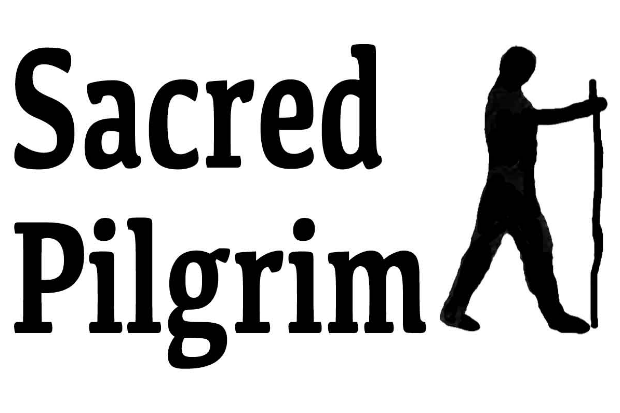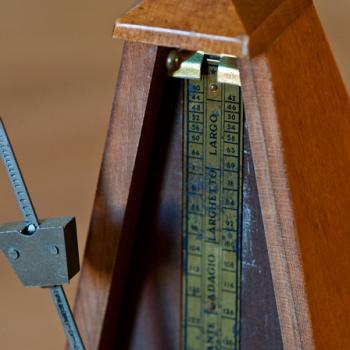Lectio Divina and Sacred Pilgrim
I listen to the Sacred Pilgrim podcast five days a week. Each weekday morning, my friend Laura Cavanaugh posts a recording to facilitate lectio divina.
Lectio divina, or sacred reading, is one of the first contemplative practices I learned from monastic life. It is an approach to reading with different priorities than the ways we usually read. When we read a news story or a textbook, or even a blog post, we often read to find information. We generally read sacred texts more for formation.
Our intention is for what we read to help form us as much as, or more than, it informs us.
I thought talking with Laura would be a great way to help us explore lectio divina.
Laura and I met when she was in graduate school in Southern California. That was also when she first learned about lectio divina. Laura did not have a particularly clear understanding of lectio divina at first. That came after she finished her degree.
After graduate school, Laura experienced a time of real burnout. She found respite and restoration in the practice. She was reading scripture as a practice of opening herself rather than with an analytical mind.
Over time a regular practice of lectio divina shaped the way she relates to God in ways she did not anticipate. She has become more aware of the the movement of the Holy Spirit in her inner life and even in her body. Laura became more aware of and attentive to memories, associations, and emotions bubbling up in her. She is more able to release her own agenda and allow space for God’s gentle invitations.
After completing training as a spiritual director, Laura spent time discerning where God was drawing her. That is when Sacred Pilgrim was born.
The Practice of Lectio Divina
Laura records the Sacred Pilgrim podcast by reading and praying aloud. My breathing is an essential part of my practice of contemplative disciplines like silent prayer and lectio divina. I was curious whether Laura’s breathing was significant as she reads and records her podcast.
Laura told me she pays a great deal of attention to her breathing. That is especially true at the beginning of each episode and in the silence between the readings. She finds, though, she is not actively thinking about her breathing during each reading.
For Laura, her breathing comes with natural pauses according to how each reading is written and punctuated. She remembered when she first began recording she would sometimes run out of breath. That helped Laura realize she was rushing or distracted or feeling anxious. Stopping the recording to breathe deeply helped her release what was keeping her from being present. She could wait until her attention was restored to begin again.
I also asked Laura about the balance between the words she reads and the spaces between them. I was interested in whether there was room for stillness as she reads aloud.
For Laura, lectio divina is not essentially about the words, but the silence between them. It is in the silence where we can be attentive and listen to the stirrings within us. The wisdom of the our hearts and bodies and the whispers of the Holy Spirit can only be heard when there is enough space between words.
Laura also told me she is never as in touch with her impatient nature as when she is practicing lectio divina. It is a practice of waiting, of turning our attention to the present moment. We may become distracted by thinking about what comes next.
Lectio Divina and What is Sacred
The sacredness of the reading is in the present moment.
Laura told me when she first started her podcast she needed to time the silence between the readings. She needed to train herself not to rush, to fully honor the space for stillness. Now, she is more likely to get caught up in the silence and be late with her next reading.
When she listens to the episodes in her own personal prayer practice, she pauses the recording. The extra space feels like a sacred luxury in our culture of busyness.
Pausing is its own spiritual discipline.
I asked Laura what makes a text sacred and whether there are texts which are inherently not sacred. We agree there is no real separation between sacred and everything else, and not really anything else. This has been a significant recognition in both of our spiritual journeys.
What makes a text sacred is our attention to the movement of the Holy Spirit, of spiritual life, within us. Lectio divina is about attending to God’s presence within us, not about what we choose to read.
Beginning a Practice of Lectio Divina
Laura suggests, if we are interested in beginning a new practice, starting with the Psalms. The Psalms, like much poetry, use imagery and figurative language which is rich for our imaginations. They express a range of emotion which connects with our memories and emotional responses.
She also strongly recommends trying lectio divina with a small group of other people or a spiritual director. Sharing our responses with other people can help spark and clarify something new in ourselves. Community can also support us as a new practice becomes a habit and a way of life.
Laura also suggests taking notes about the passages we read and what arises for us in the stillness. We may receive insights or questions or invitations. Journaling can allow us to remember and continue reflecting over time.
Laura and I also agreed we can bring our practice to other parts of our lives. We do not need to be reading words to practice lectio divina. The same practice can apply to images or music or taking a walk.
You can learn more about Laura and her approach by listening to the Sacred Pilgrim podcast.
How will we pause to catch our breath and pay attention today?
Where will we find space to listen this week?
[Image by Sacred Pilgrim]
Greg Richardson is a spiritual life mentor and leadership coach in Southern California. He is a recovering attorney and university professor, and a lay Oblate with New Camaldoli Hermitage near Big Sur, California. Greg’s website is StrategicMonk.com, and his email address is [email protected].













